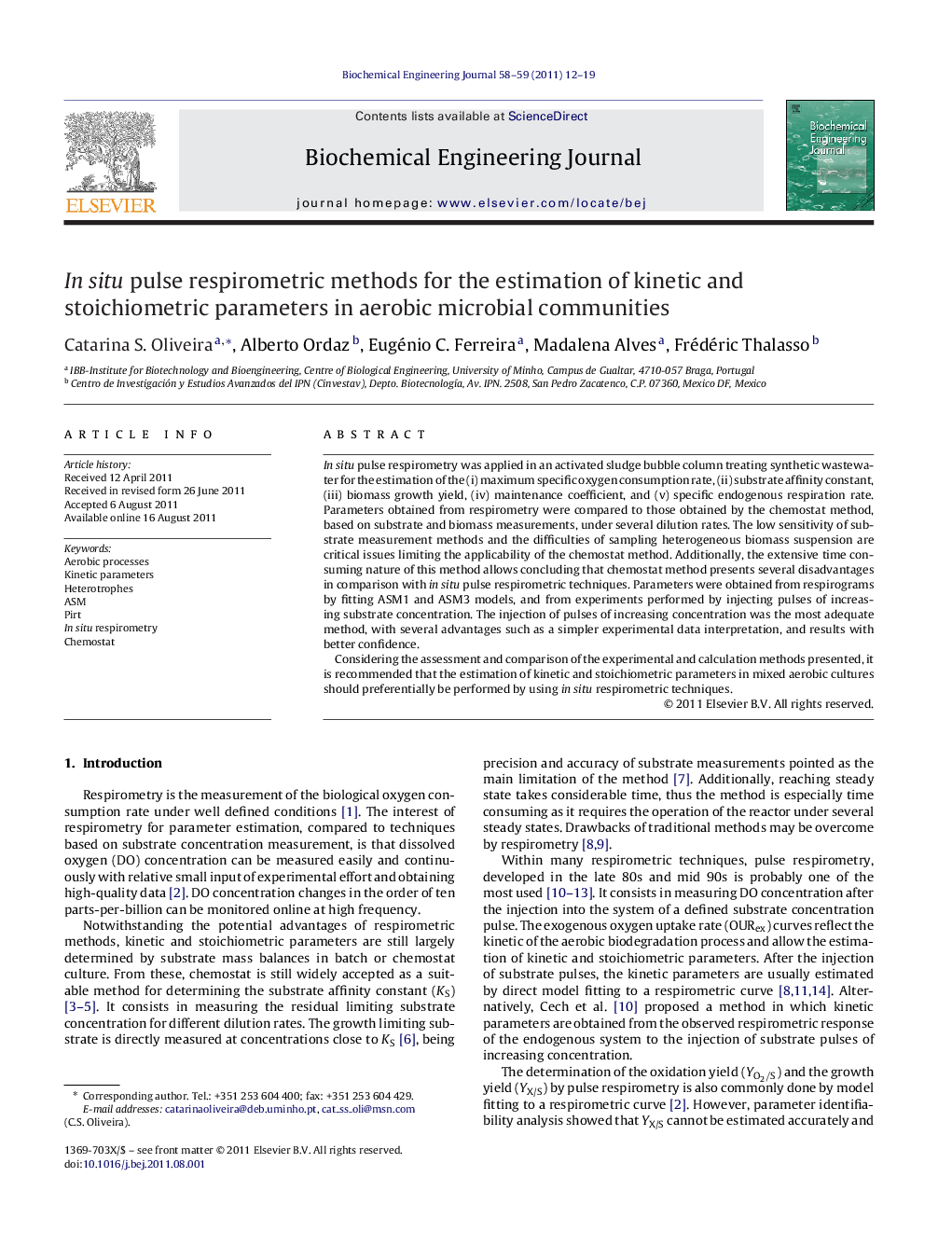| Article ID | Journal | Published Year | Pages | File Type |
|---|---|---|---|---|
| 3680 | Biochemical Engineering Journal | 2011 | 8 Pages |
In situ pulse respirometry was applied in an activated sludge bubble column treating synthetic wastewater for the estimation of the (i) maximum specific oxygen consumption rate, (ii) substrate affinity constant, (iii) biomass growth yield, (iv) maintenance coefficient, and (v) specific endogenous respiration rate. Parameters obtained from respirometry were compared to those obtained by the chemostat method, based on substrate and biomass measurements, under several dilution rates. The low sensitivity of substrate measurement methods and the difficulties of sampling heterogeneous biomass suspension are critical issues limiting the applicability of the chemostat method. Additionally, the extensive time consuming nature of this method allows concluding that chemostat method presents several disadvantages in comparison with in situ pulse respirometric techniques. Parameters were obtained from respirograms by fitting ASM1 and ASM3 models, and from experiments performed by injecting pulses of increasing substrate concentration. The injection of pulses of increasing concentration was the most adequate method, with several advantages such as a simpler experimental data interpretation, and results with better confidence.Considering the assessment and comparison of the experimental and calculation methods presented, it is recommended that the estimation of kinetic and stoichiometric parameters in mixed aerobic cultures should preferentially be performed by using in situ respirometric techniques.
► In situ estimation of stoichiometric and kinetic parameters. ► Comparison of chemostat and respirometric method. ► Comparison of ASM fitting and increasing substrate concentration pulses method.
